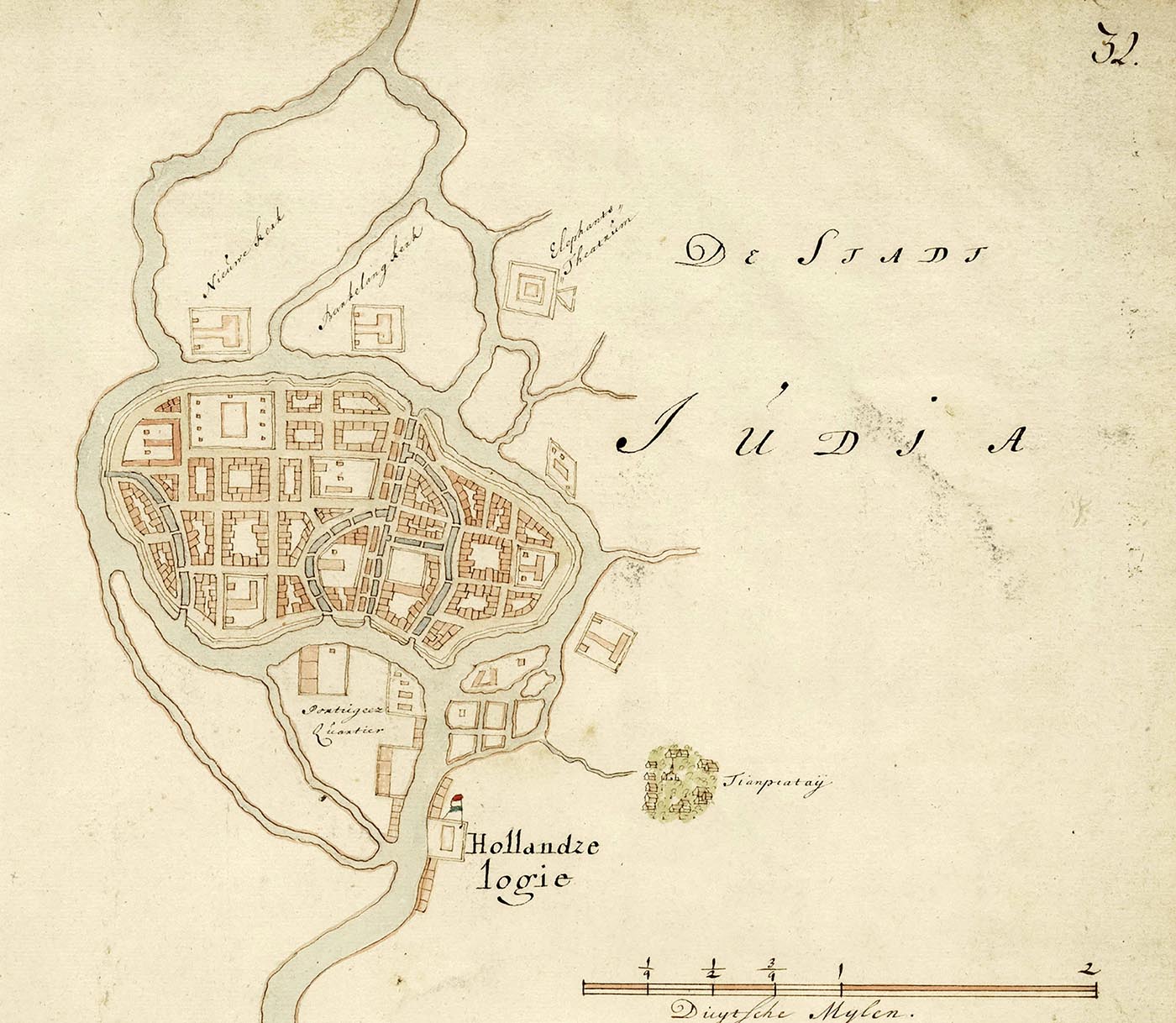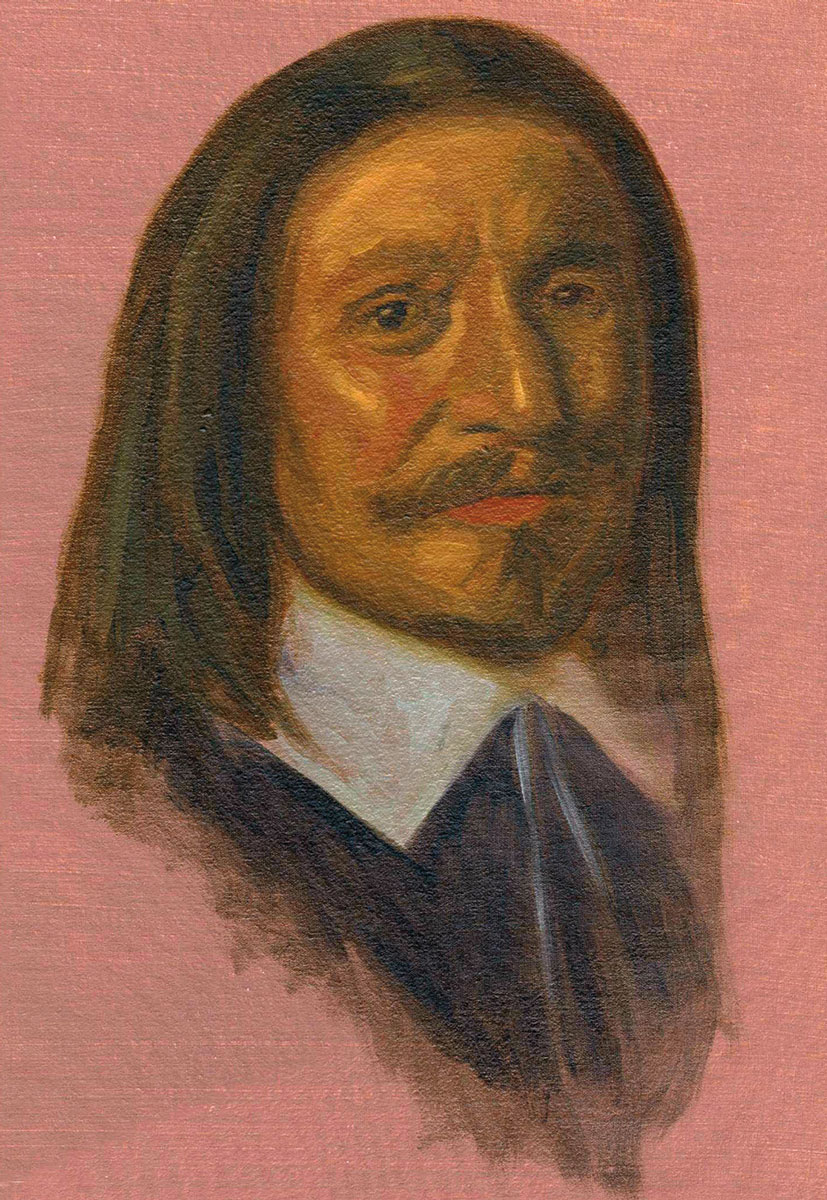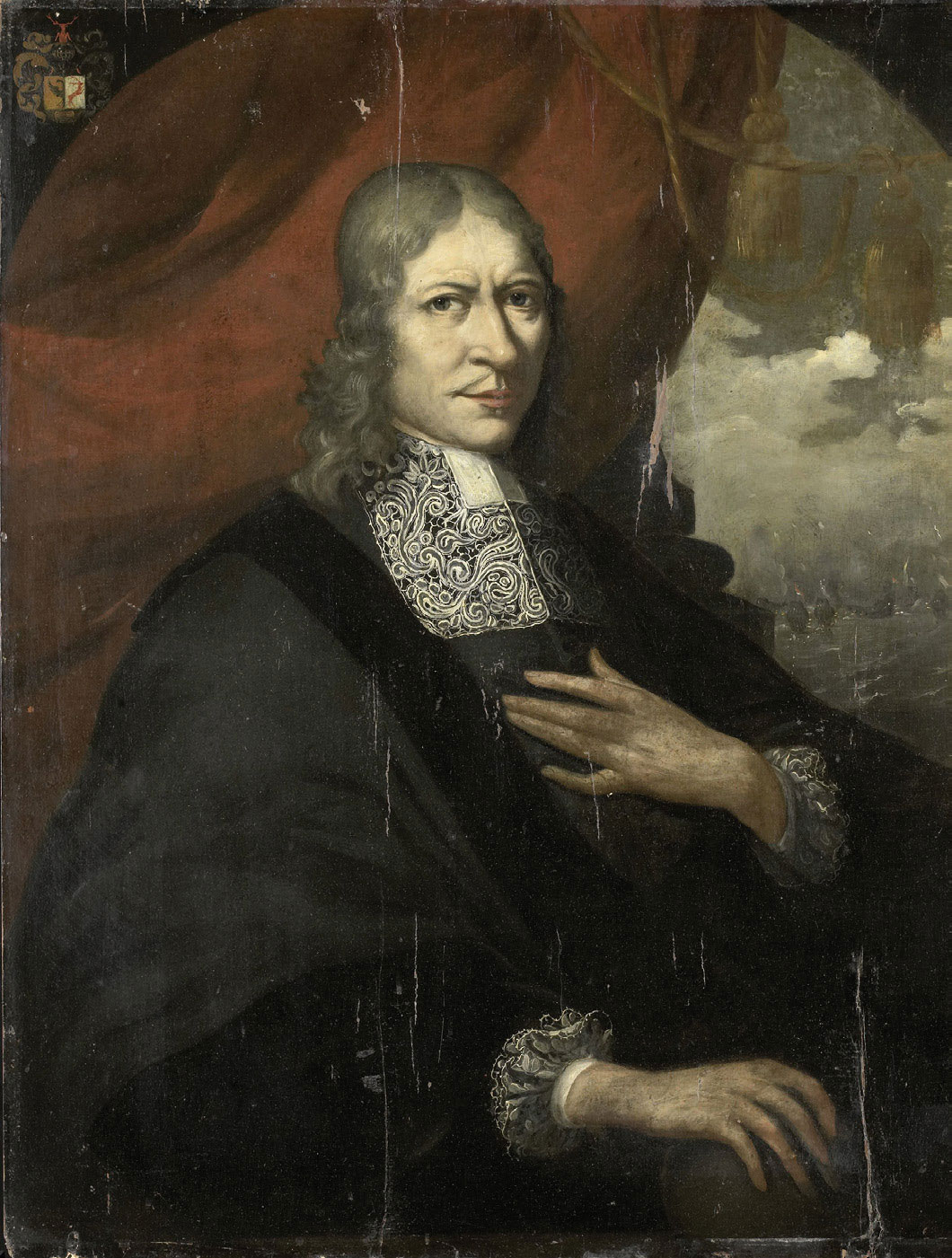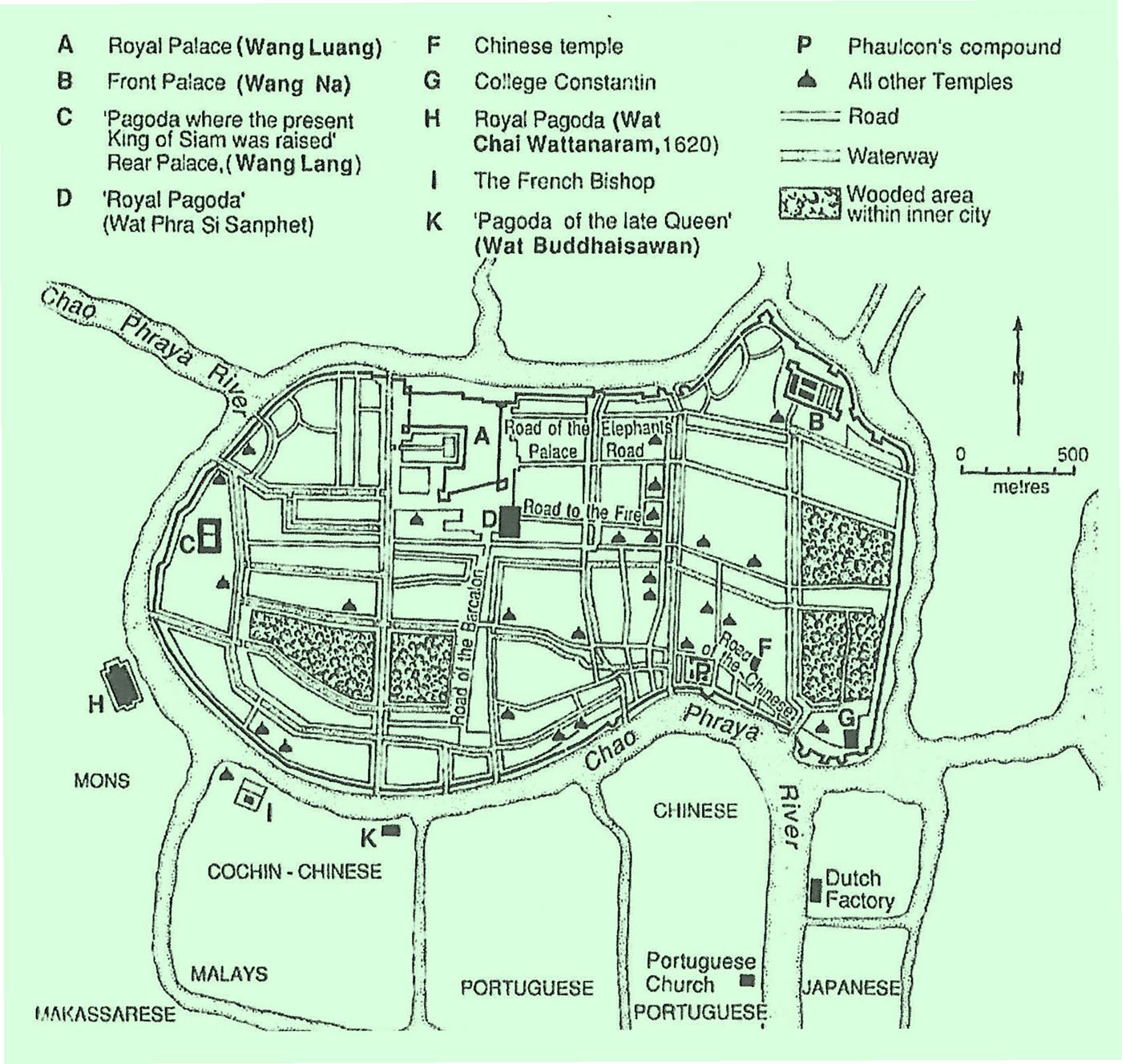Sex and trade in seventeenth century Siam. Osoet Pegu and her Dutch lovers
After about a century of Europeans steadily trickling into Ayutthaya, Siam’s capital city at that time, representatives of the Dutch East India Company (Verenigde Oostindische Compagnie or VOC) arrived in 1604 and planted a factory (or trading post) there four years later. With varying degrees of success and intermittent closures, the post survived until 1767, when the city was razed by the Burmese. Siam was essentially an export market for the VOC and the mainstay of its Siam trade was without doubt the export of deer hides to Japan. Osoet Pegu, a remarkable woman of Burmese-Mon descent, was a formidable trader and force to be reckoned with in Ayutthaya. This article takes a look at the impact she made, based on VOC archives.
A tale to tell
Born in Ayutthaya around 1615, Osoet came to the Dutch compound at an early age under yet unexplained circumstances. 1 In time she would have a succession of Dutch lovers and have children with two of them. 2 On 18 June 1658, she passed away after a long, lingering illness followed by a stroke that left her paralysed and unable to speak. The Dutch persuaded the King not to have her cremated as was customary in Siam, but to allow her to be interred in the Company’s cemetery in accordance with Christian religious practices. 3

Fig. 1: Map of Ayutthaya around 1650. South of the city along the river lies the small Dutch lodge across from the district where the Portuguese and Japanese merchants were settled. The factory was enclosed by a rectangular bamboepagger (= fence) and a moat. The main building functioned as a warehouse and as living quarters for the senior Company servants. The other employees shared a number of small houses on the grounds. In: Gijsbert Heecq, Journael ofte Dagelijcxsz Aenteijkeninghe wegen de Notabelste Geschiedeniszen voorgevallen en gepasseert op de derde Voyagie van Gijsbert Heecq naer Oost-Indijen (Journal kept by Gijsbert Heecq on his third voyage to the East Indies), 1654-55. The manuscript is kept at the Dutch National Archives, The Hague in the collection Aanwinsten van de (voormalige) Eerste Afdeling (Acquisitions of, what used to be, the First Department), inventory nr. 959, access code: 1.11.01.01.
In the absence of crucial building blocks – diaries, correspondence, memoirs, reminiscences, autobiographical writings and the like – from which to construct Osoet’s life story, we can only rely on what others had to say about her. And this is precisely where the problem lies since those others were VOC officials, westerners who tended to portray ‘native women’ as sensual, lustful, and immoral. Sadly, Osoet’s story is of necessity wholly based on the very sources that overwhelmingly privilege the viewpoint of white Calvinist males steeped in a patriarchal Christian tradition. Still, these materials contain information not available anywhere else and, as one author pointedly remarked: “Without the VOC documents there would be no tale to tell at all”. 4 And indeed, a tale there is to tell, albeit that without any personal records to build on, we can merely situate Osoet Pegu in her time and place.
The time was the seventeenth century and the place Ayutthaya, Siam’s celebrated royal capital, one of Southeast Asia’s leading port cities. Its centrally located market place consisted of a long, wide, spacious lane with on either side an array of stalls selling a wide range of goods. And here, in the heart of the city’s business centre, female traders played a key role, more often than not as prominent, large-scale commercial participants with the requisite capital and connections that enabled them to be successful. The wide gulf separating the Royal Court from the marketplaces was precisely what brought the likes of Osoet Pegu into their own. Aristocratic ladies would look for women, often of low birth or non-Siamese identity, who could move linguistically and culturally across social boundaries to act as intermediaries. 5 Osoet was of non-aristocratic descent with an undoubted mastery of the Dutch language and familiarity with European ways, making her the perfect mediator and cultural broker.
Over the years, Osoet had intimate relations with a succession of Dutchmen. Two of her three Dutch lovers were directors of the VOC’s Ayutthaya office. They would have been aware that a relationship with a well-connected and astute businesswoman such as Osoet, was crucial to the smooth running of the Company’s trade since she was well placed to mediate between the VOC and the Palace. And indeed, Osoet’s contacts and influence contributed in no small measure to the successful sealing of lucrative business deals beneficial to all parties concerned, not least the VOC.
Jan van Meerwijck
The first of Osoet’s Dutch lovers was Jan van Meerwijck. In 1621, he sailed East as an assistant in the service of the VOC. He left the Company in 1627 to become a private trader and joined a group of Dutch free burghers that was then very active in countries around the Bay of Bengal, Siam in particular. Jan van Meerwijck and Osoet Pegu met in Ayutthaya, perhaps at the Dutch compound. At 16 years old, Osoet moved out of the shadows and entered the VOC annals as Van Meerwijck’s wife or concubine. She bore a son shortly before his untimely death in 1635. The exact manner of his death is not certain; he was reportedly clubbed to death in Burma, but an entry in Batavia’s Daghregister [Daily Journal] records that he was captured near Martaban and hanged. 6 Be that as it may, Jan van Meerwijck came to a sorry end leaving Osoet to embark on a remarkable and rewarding new life in Ayutthaya in which the Company and other Dutchmen would play a key role.
Jeremias Van Vliet
Jeremias van Vliet was Osoet’s second lover. He sailed from Holland in 1628 and was posted to the VOC’s Japan factory. He left for Siam in 1633 and took over the directorship in 1636, a post he kept for five years. Charges of dishonesty were laid against him in 1645, but rather than putting him on trial, the Company repatriated him. He went home knowing full well he would never be allowed to return to Asia.
Van Vliet and Osoet probably began their relationship around the time he was made director, and when she was 21 years old. Their relationship lasted many years during which she bore three daughters. As director, Van Vliet will almost certainly have turned to Osoet when her aid was required for contacts and influence at court. These links made her an invaluable and indispensable intermediary between the Company and the Palace. Sources clearly show that Osoet was already well established both at Court and in the trading community well before she met van Vliet. 7

Fig. 2: Jeremias van Vliet (1602-1663), Mathijs Gootjes. Image courtesy Schiedam Council Archive, Amsterdam.
Eventually, their three daughters became the cause of endless wrangling between Van Vliet and the Company on the one hand and Osoet and the King of Siam on the other. Disputes about children fathered by Dutchmen with local women were quite common. Upon leaving Ayutthaya, the Dutchmen usually sought custody of their offspring. At the very least, they wanted them sent to Batavia for a ‘proper’ Christian upbringing. The King, however, was adamant that these children belonged to Siam and should remain in the country with their mothers.
Van Vliet petitioned the King on several occasions to allow his daughters to leave the country. In a letter to the then VOC director, Van Vliet suggested that the children were probably being kept in Siam because their mother refused to let them go, and he begged the VOC director to rescue his daughters from the clutches of ‘those pagans’. 8 But it soon became clear that so long as Osoet was alive it would be impossible to wrest her daughters from her since her prominent position allowed her to thwart the Company at every turn. 9 It is indicative of the high regard in which she was held at Court that the King did not permit Osoet’s daughters to leave the country till after their mother’s death and even then, only after further pleadings by the Dutch Governor–General. 10
Jan Van Muijden
Jan van Muijden, the third of Osoet’s Dutch lovers, left Holland and went east in 1643. A year later he arrived in Ayutthaya as a junior merchant. A mere two years later he was made provisional director and the following year permanent director, a post he held till 1650. A man of limited ability who barely spoke Siamese and had no experience in running an office, the twenty-five year old Van Muijden increasingly relied on the older (31 year-old) and more experienced Osoet Pegu. They soon developed a sexual and business relationship whereby Osoet effectively took over all the buying and selling of the Company’s goods. 11 Unpleasant gossip notwithstanding, there can be no doubt that Osoet was besotted with her handsome young lover, and he no less with her. She spared no pains to win him the favour of the Siamese authorities and through her efforts he obtained generally hard to come by export licences for rice, hardwood and other products. 12
In time, misgivings began to emerge about his administration and negative reports reached Batavia, the VOC’s headquarters in the East, alleging that Van Muijden and the ‘shrewd’ Osoet jointly handled all the Company’s affairs and that he followed her advice to the letter. 13 Clearly, Osoet’s influence over the Company’s Siam affairs was never more pronounced than during Van Muijden’s stewardship from 1646 to 1650. The Company’s trade flourished, mainly due to the pair’s invaluable connections with the Siamese Court, particularly the friendship and patronage bestowed upon them by one of the King’s chief brokers. This triangular relationship was instrumental in speeding up the Company’s business, such as the procurement of products and export licences. 14 In the early years of Van Muijden’s directorship the King even granted the Company a monopoly on the export of deerskins. This was quite a coup for the Dutch, for it allowed them to exclude all other merchants from the Siamese hide trade; moreover, these skins were much in demand in Japan where they made huge profits. In 1652, after Van Muijden was recalled to Batavia, the King revoked the VOC’s deerskin monopoly.
Company records portray Jan van Muijden as a shady character who was to blame for his own downfall. He stood accused of fiddling with the books and conducting an illicit private trade with Japan. After his records were audited, he was found guilty of corruption and mismanagement, stripped of his directorship and recalled to Batavia. Van Muijden protested his innocence throughout and in the end there was insufficient evidence to convict him. Still, unable to wholly clear his name, he was not permitted to return to Siam.

Fig. 3: Rycklof van Goens (1619-82), Martin Palin. Image courtesy The Rijksmuseum, Amsterdam.
As for Osoet, a prominent VOC servant (Rijckloff van Goens) declared quite unashamedly that she had grown prosperous and influential by cohabiting with several VOC directors and that her subsequent wealth had allowed her to exert pressure on the Siamese government and even the King. 15 He did acknowledge though that in Osoet’s day every Company director had made convenient use of her prominent position to obtain favours from the Siamese authorities and insisted that good relations be maintained since, for a variety of reasons, Osoet Pegu was more deserving than others. 16
In retrospect, it is astonishing that Van Goens, a high-ranking representative of a trading company with as its raison d’être the acquirement of the highest possible gains, could accuse as astute a businesswoman as Osoet of making a profit! Especially since the high point of VOC-Siamese relations coincided with the period in which Osoet Pegu’s influence over the Company’s affairs was at its peak (the 1630s and 1640s). Undoubtedly this had much to do with Osoet’s influence in royal circles, yet Van Muijden’s own positive contribution should not be underestimated. To show his appreciation, the King bestowed on him a high Siamese rank. But, in the end, Batavia’s refusal to reinstate Jan van Muijden had a negative effect on Siamese-Dutch relations. A respected VOC servant wrote in his diary in 1655 that the VOC’s Siam trade had decreased considerably following the departure of Jan van Muijden. Osoet certainly did the Company no harm, quite the contrary.
Osoet’s legacy
Mixed-race families were common in Ayutthaya, though jurisdiction over the children often led to bitter and protracted disputes, particularly between the Siamese kings and representatives of the VOC. Siamese law generally forbade VOC employees (and other foreign traders) to take their children by local women with them on being transferred. The VOC’s own policy with regard to the children was unambiguous; the employees were not permitted to return to Holland until their offspring were safely installed in the Company’s orphanage in Batavia.

Fig. 4: Ayutthaya in 1687. In: Anthony Reid, Southeast Asia in the Age of Commerce 1450-1680, Vol. II, Expansion and Crisis, New Haven and London, Yale University Press, 1993, p. 81.
Although Osoet Pegu left a sizeable albeit disorganized estate, there was a moment when it looked like her children would not inherit her wealth because of the attempts by Siamese nobles to get hold of it. Johan, Osoet’s son by Jan van Meerwijck was born in Siam (Tenasserim) and was later employed by the VOC. 17 In 1658, shortly after his mother’s passing, Johan arrived in Ayutthaya. The Siamese mandarins, disgruntled at having the son’s share of the estate slip through their fingers, sought to deprive him of his mother’s inheritance. However, the King proved magnanimous and ordered Osoet’s property to go directly to her four children (Johan and Osoet’s three daughters), a royal intervention crucial to safeguarding their inheritance. The VOC brokers were also told in private that if the governor-general put in a request, the King would allow Osoet Pegu’s children to leave for Batavia. 18 And so, her four half-Dutch children left Siam, never to be heard of again. 19 Osoet Pegu’s grave can likely still be found in the Dutch cemetery in old Ayutthaya. Osoet’s story, however incomplete, will hopefully assure her of a much-deserved place in the history of Siam and the VOC.
Wil O. Dijk, former Fellow at the International Institute for Asian Studies (IIAS) wil.dijk@casema.nl